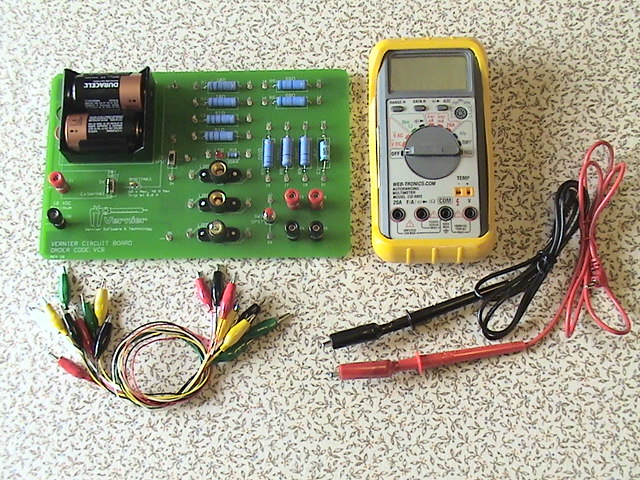Lab 5: Ohm’s Law
The flow of charge in a conducting wire is referred to as electric current. Numerically, it is equal to the net charge passing through the wire in one second. The voltage drop (or potential difference) across a section of the wire produces the force responsible for pushing the charges. Therefore, increasing the voltage results in a larger current in the wire.
According to Ohm's law, for many conductors and over a wide range of conditions, the current is directly proportional to the voltage drop. Resistors made of such conductors are called ohmic resistors. Materials that do not follow this simple law are referred to as non-ohmic.
Objectives
After completing this experiment, you should be able to
- state and demonstrate Ohm’s Law.
- discuss the difference between ohmic and non-ohmic resistance.
- construct simple electric circuits.
- use the multimeter to make voltage, current and resistance measurements.
Reading Assignment
Before starting this experiment, make sure you read
- sections 18-1 to 18-4 in the eText.
- sections 19-1, 19-2, and 19-8 in the eText.
- the proposed theory to be tested in this experiment.
Equipment
The lab kit provides the main equipment required for this experiment: Vernier circuit board, a digital multimeter, and other accessories.

Procedure
This experiment is the first of two experiments on electric circuits. Here is a suggested procedure.
Note that the pictures below use the original Vernier Circuit Board. It is possible that you received the more recent Vernier Circuit Board 2. The instructions in the procedure should apply to either version of the circuit board. If you require any clarification or assistance, please contact your tutor.
 |
 |
 |
 |
 |
 |
Picture 1 |
Picture 2 |
Picture 3 |
Picture 4 |
Picture 5 |
Picture 6 |
 |
 |
 |
Picture 7 |
Picture 8 |
Picture 9 |
The video below demonstrates the use of the multimeter to measure voltage and current.
 |
Video 1 |
Analysis and Discussion
In this part of the lab you will discuss the validity of the proposed theory based on your measurements and data collected. You have some freedom in choosing the appropriate method to analyze your data and to make your arguments. However, your analysis and discussion must be relevant, convincing, and conclusive. Where appropriate, support your writing with tables, graphs, diagrams, and detailed calculations.
Here are some guidelines for the analysis and discussion.
Questions
Answer the following question in detail at the end of your lab report.
- From your data, estimate the value of the battery's internal resistance.
Prepare your lab report for this experiment and submit it for marking.